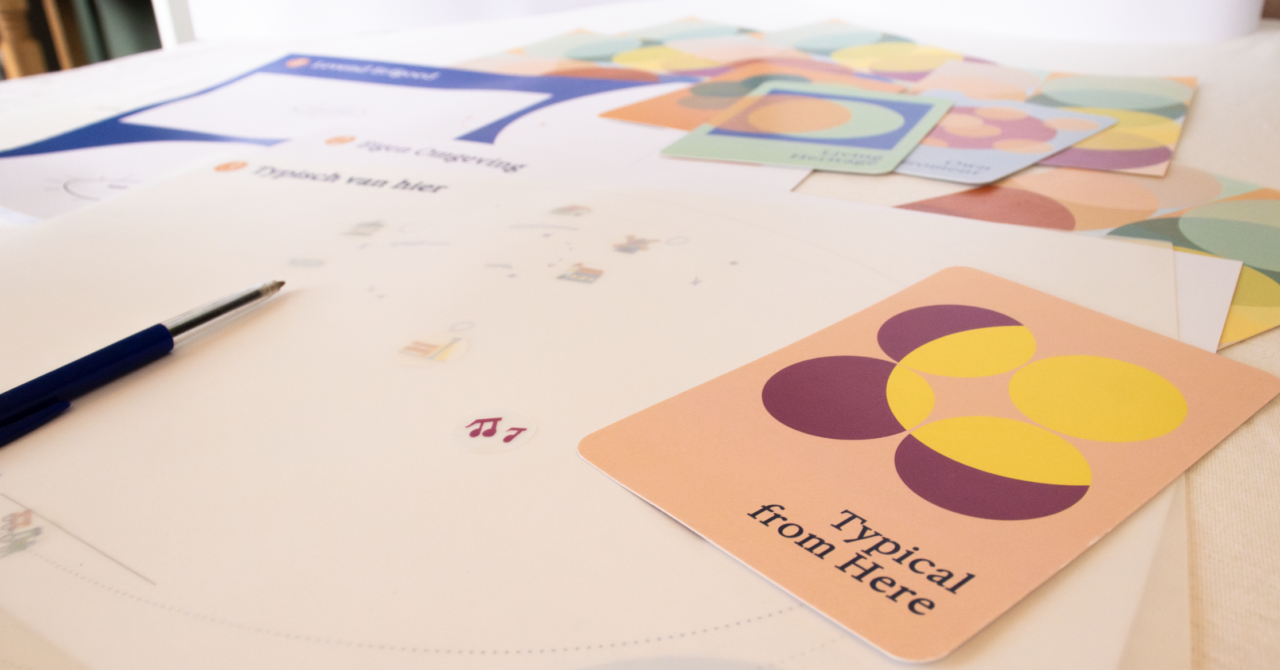The Act of Heritage

Project details
- Year
- 2024
- Programme
- bachelor-illustration-rasl-dual-degree
- Practices
- Honours Programme
- Minor
- RASL Re-Imagining Tomorrow Through Arts and Sciences
Co-creation toolkit on living heritage for heritage professionals
In the past 10 years, the heritage sector has increasingly focused on intangible (living) heritage, which has led to a growing demand for participation/co-creation projects with communities.
Though, ‘living heritage’ is not actually ‘alive’ in our current society. In my thesis, I investigated an example of a participatory approach to intangible heritage. I interviewed cultural organisations and companies about their recognition as ‘Real Rotterdam Heritage’. The research showed me that participants could not explain ‘living heritage’ or what it means to them, their practice or communities.
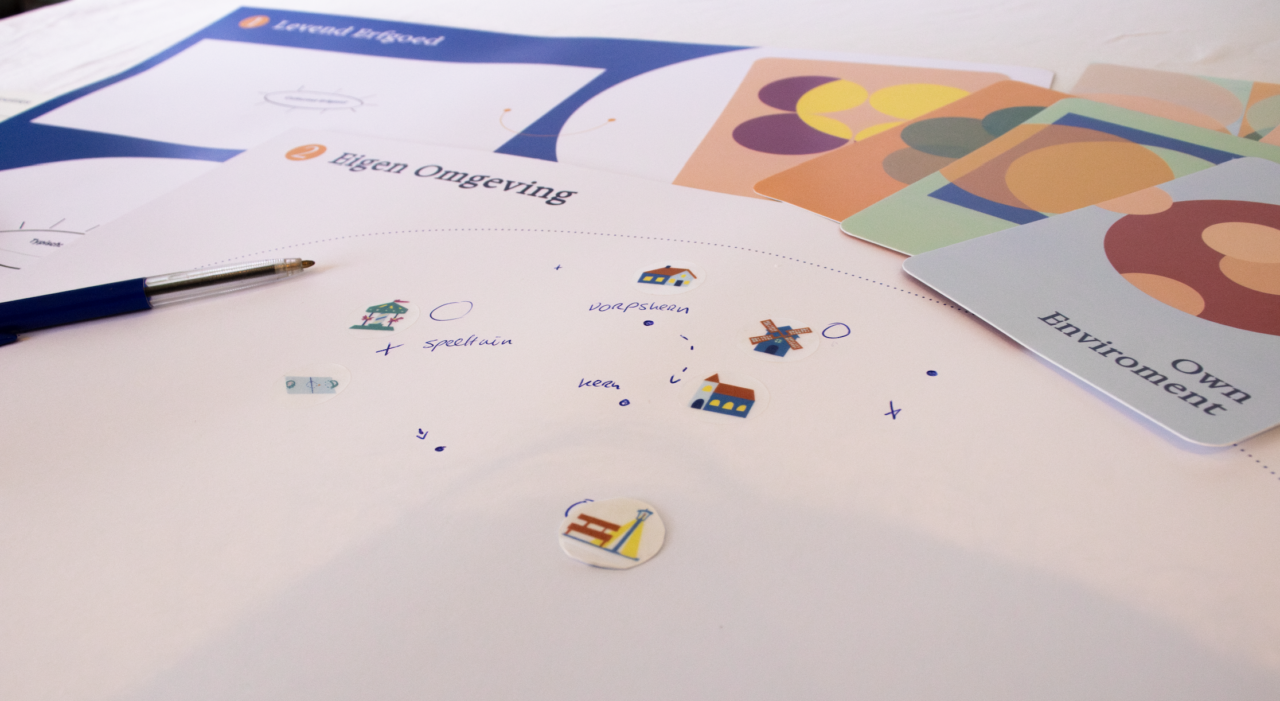
“My first association to heritage is that it is about conserving the past that is worth conserving … As it’s part of the history of Rotterdam, that we need to take care of. But I mostly think of historical things, not current events.”
The concept is too far removed from people’s own experiences. Even though their practice and connection to their neighbourhoods and communities clearly indicated the passing on of living heritage on a daily occurrence.
To help organise more participation within the intangible heritage sector, I designed tools to shape a conversation around living heritage and create recognition in daily life.
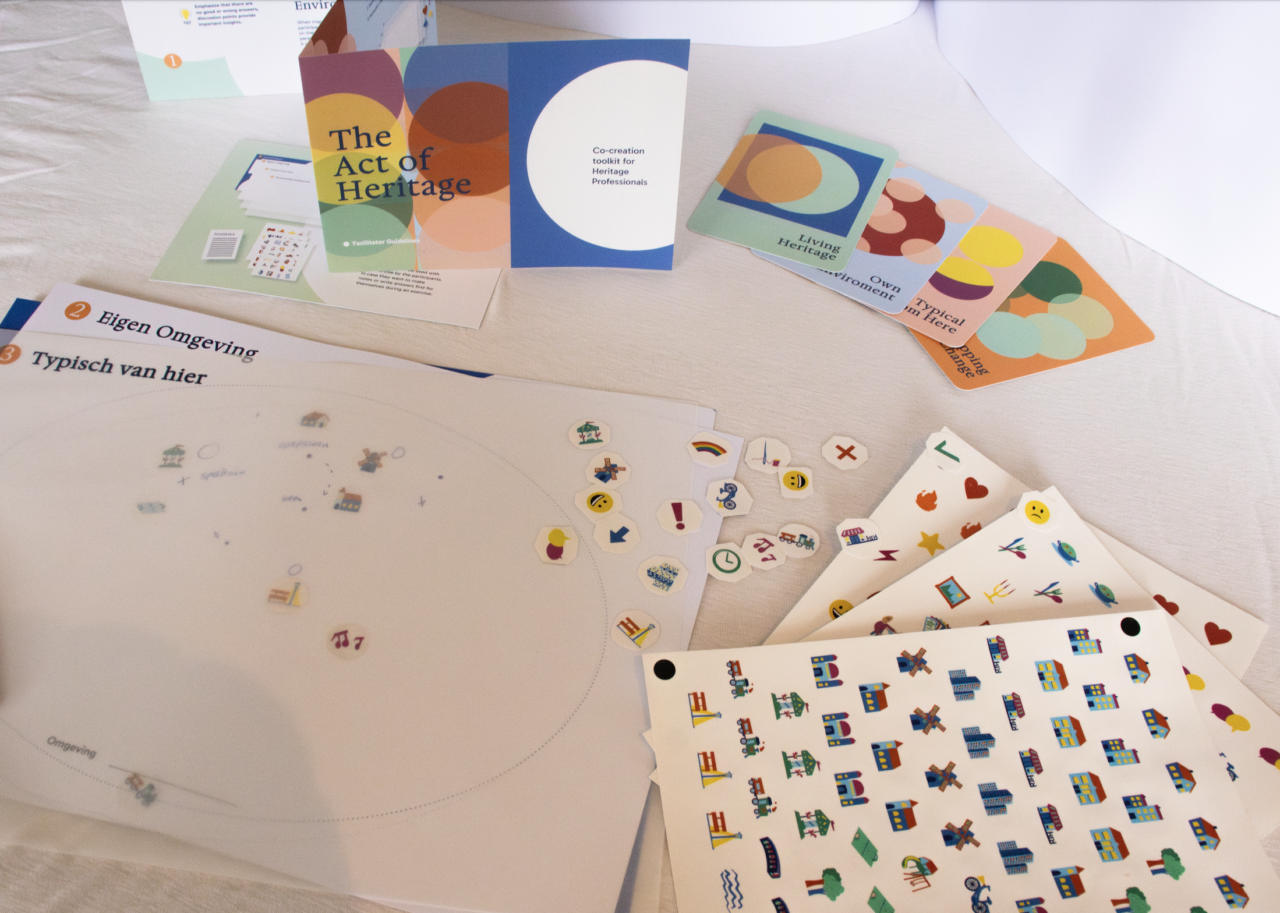
Tools
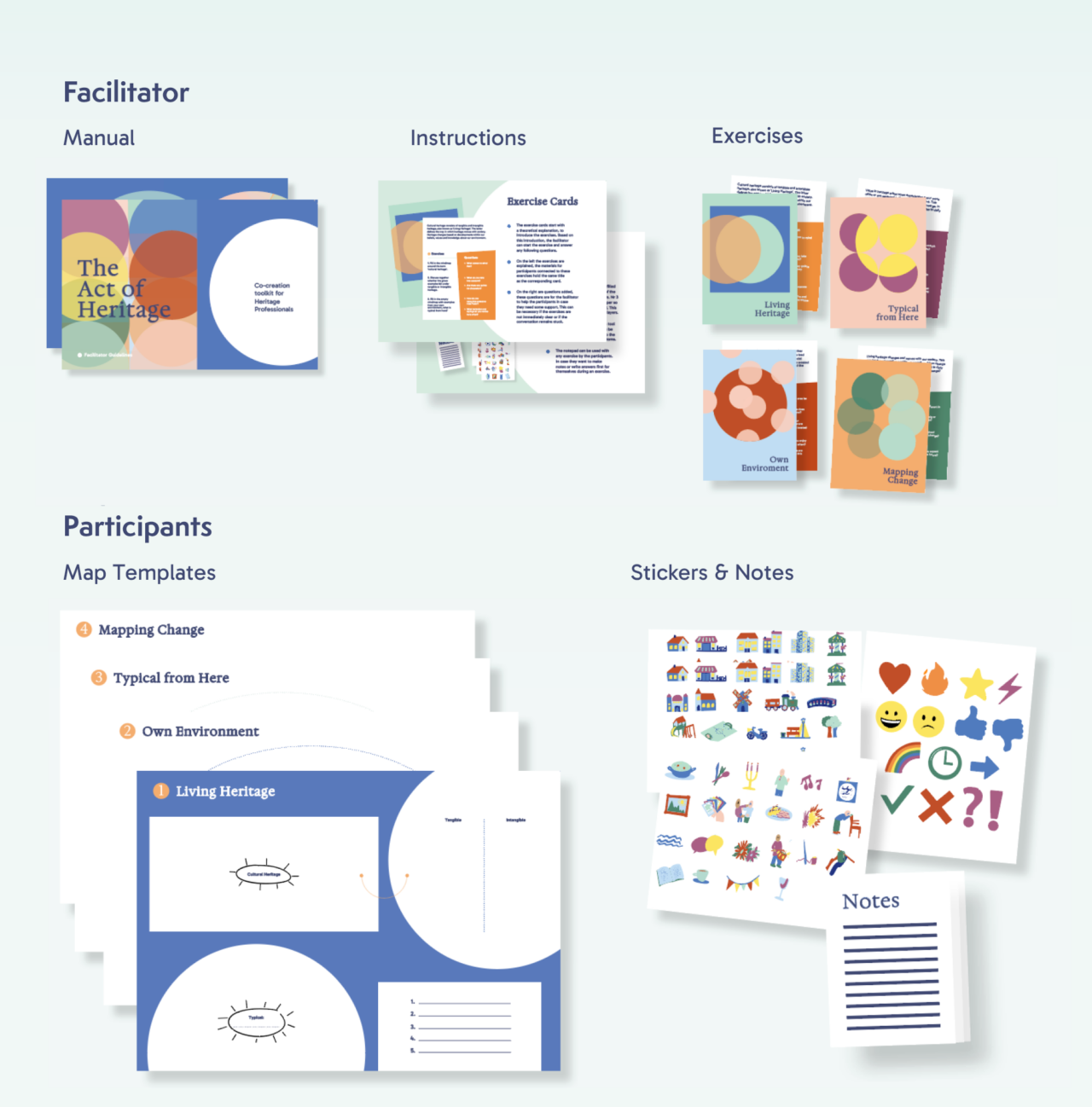
The toolkit is divided into materials for the facilitator and the participants. These materials and tools provide the basis for facilitating a co-creation session in which participants create a local subjective map of an environment.
The worksheets can be filled in entirely from the perspective of the participant. By working with visual tools, new insights and experiences are shared and meaning is given to the concept of ‘living heritage’.
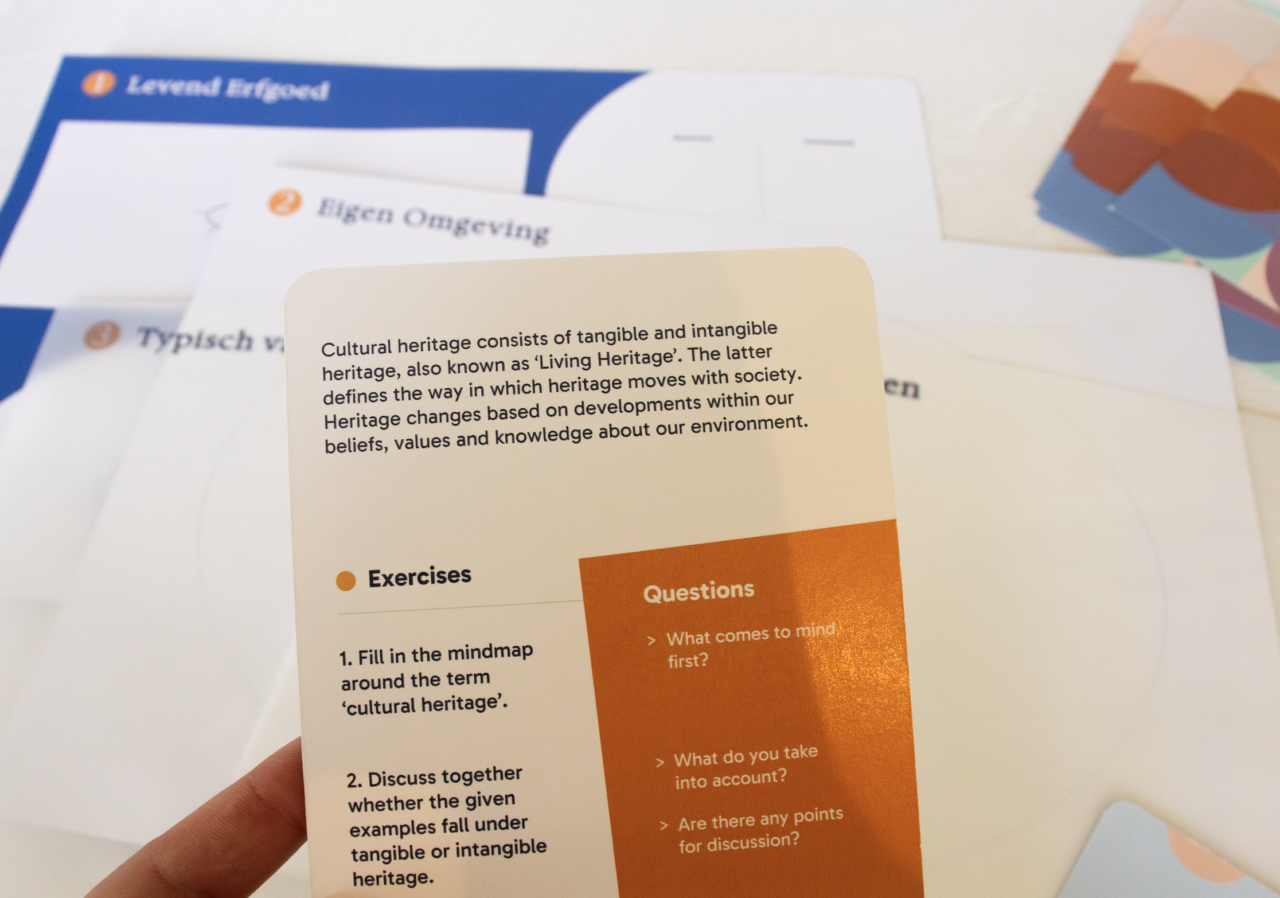
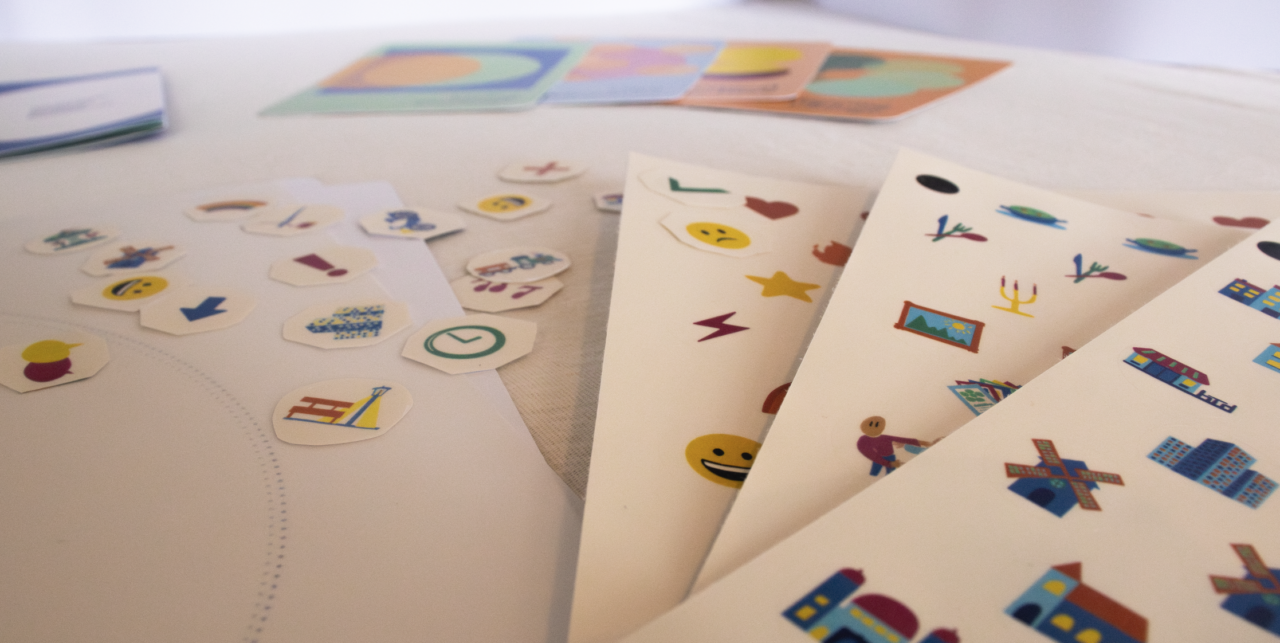
Tests
To test out the concept and try different materials, there were several test phases. Starting with post-its and an empty page, to the use of stickers, images and templates. In these tests it became clear that many conversations can occur on how and where living heritage exists. The finished prototype uses stickers as visual tools to build the map however the participant prefers.
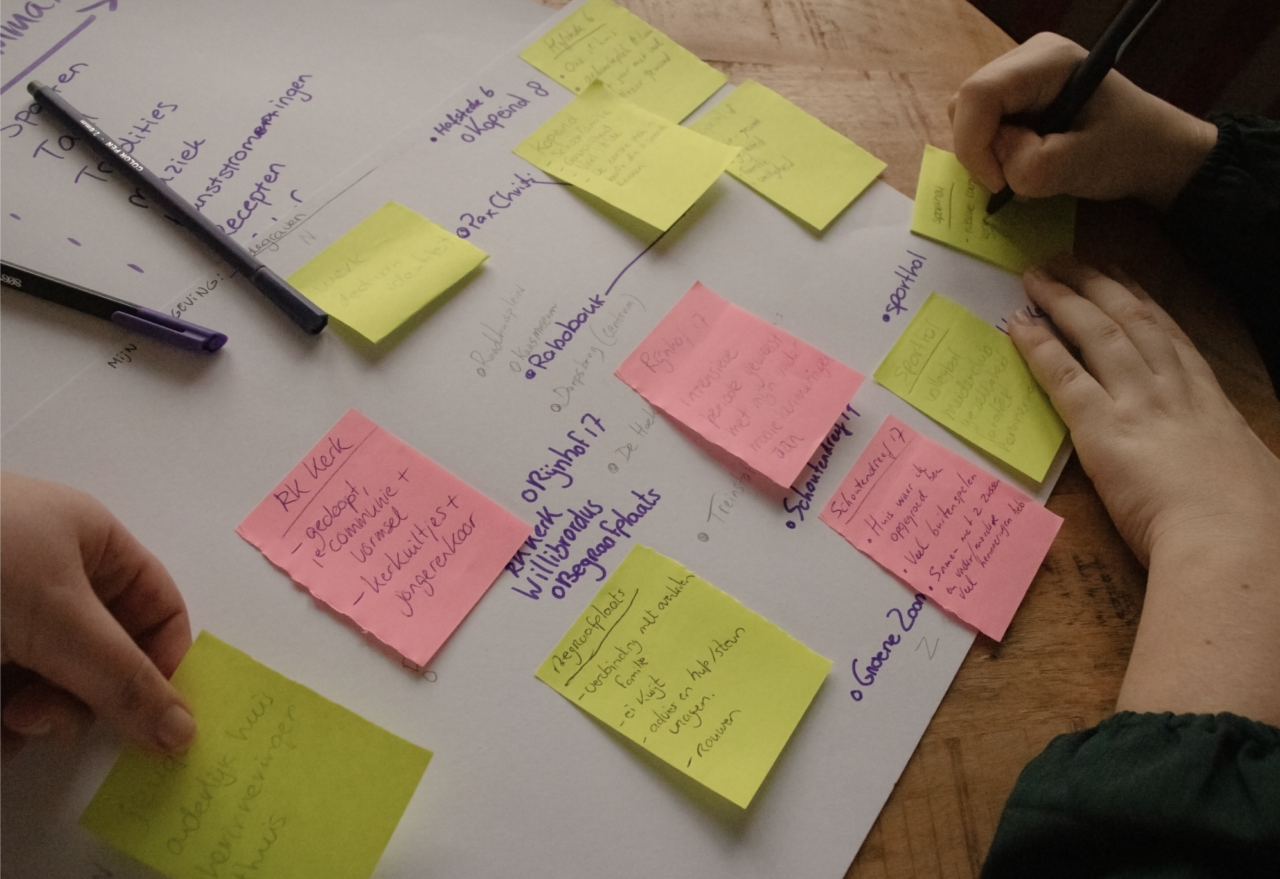
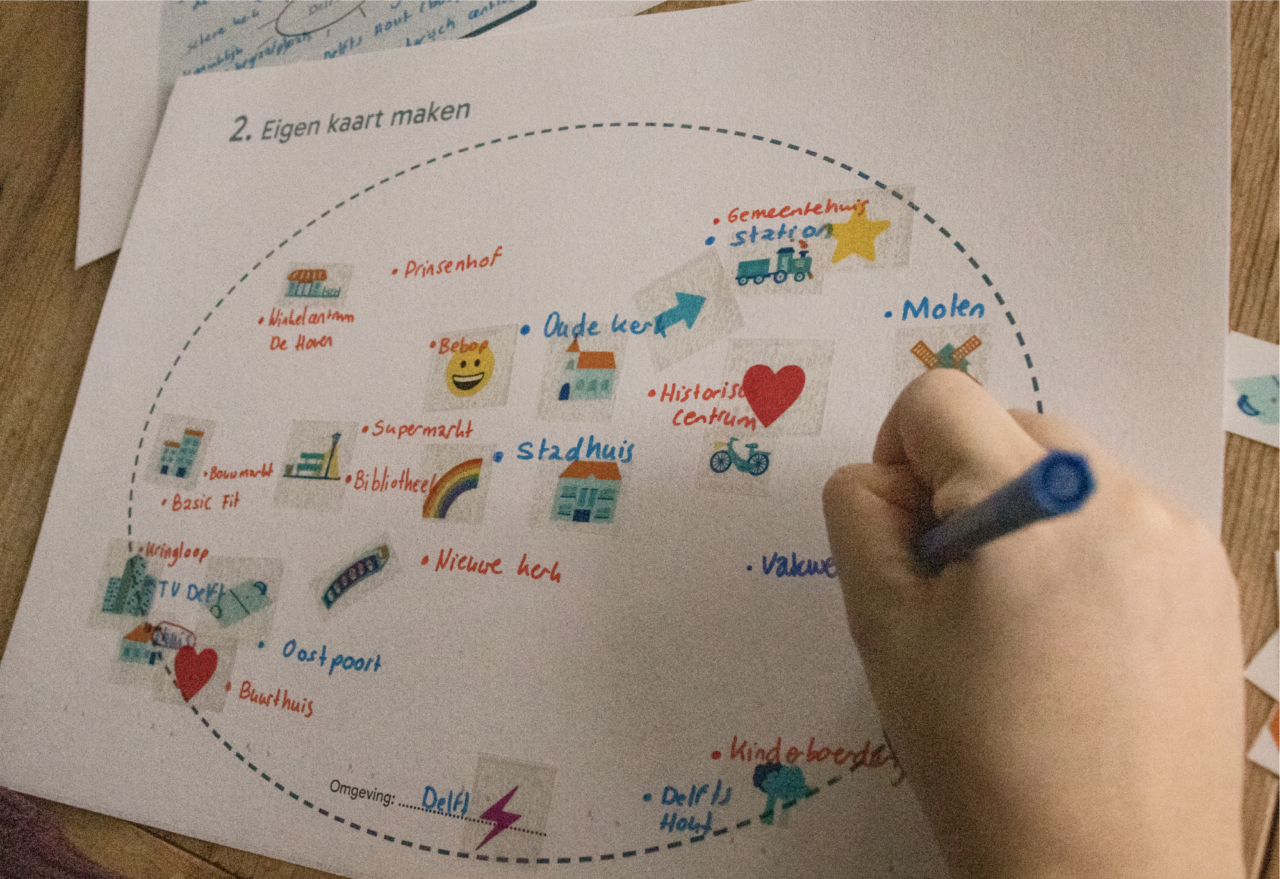
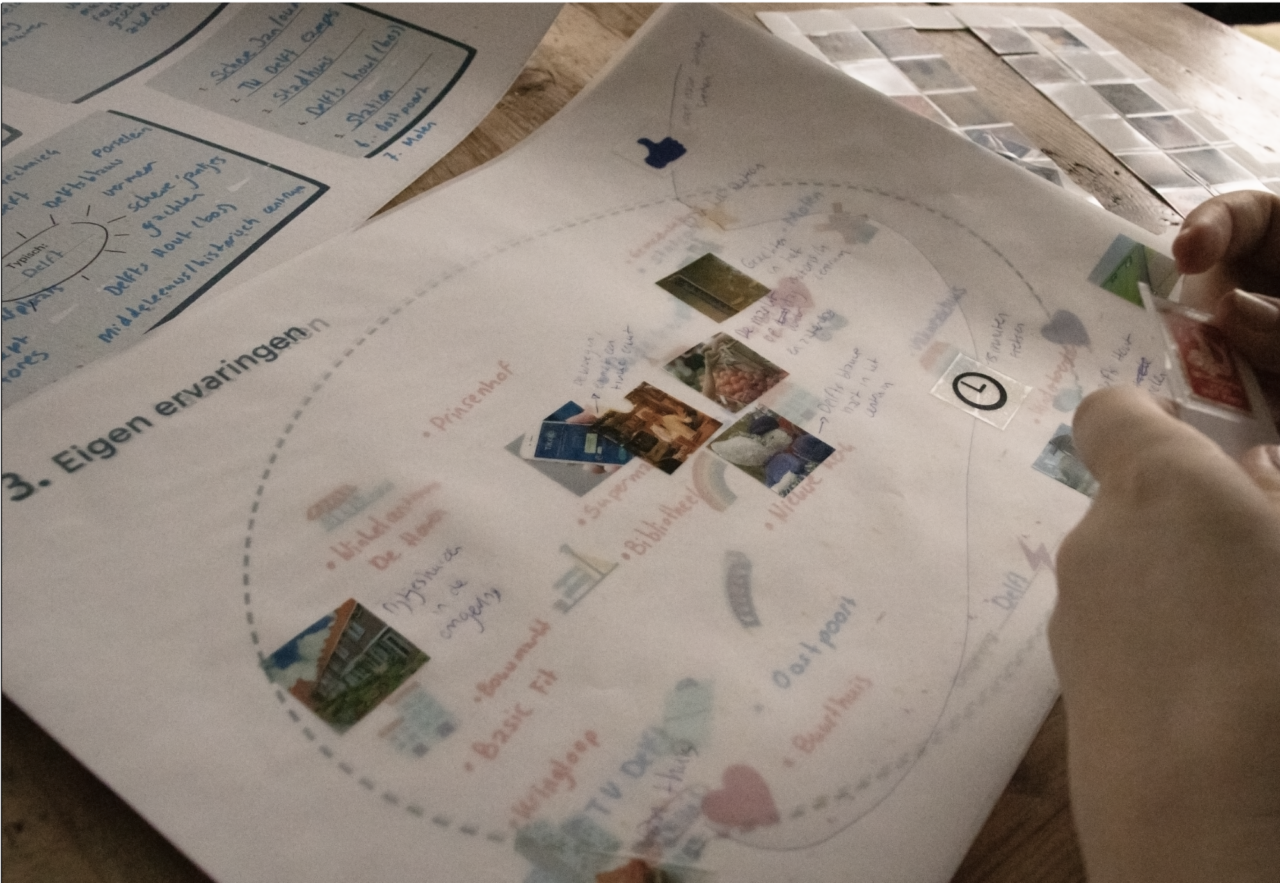

Maps
The assignments are divided into steps which each add a new layer to the map. By working with transparent layers, existing knowledge can be built upon. Ultimately, the map works towards a vision of the future.
